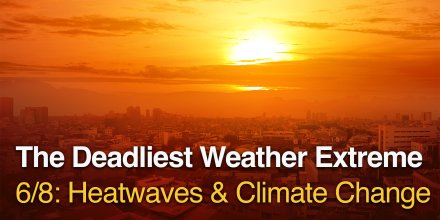
Webinar: Climate Data Tools for Resilient Urban Planning
This second webinar in the series presents digital tools that turn climate data into actionable strategies for urban resilience.

This second webinar in the series presents digital tools that turn climate data into actionable strategies for urban resilience.

Human activity drives a sharp rise in heatwaves, with some regions exceeding climate model projections.
|
|
|||||||||
|---|---|---|---|---|---|---|---|---|---|
|
Icon
|

|

|

|

|

|

|

|

|
|
|
Temperature (°F)
|
|||||||||
|
Temperature felt (°F)
|
82° |
82° |
85° |
87° |
86° |
83° |
82° |
81° |
|
|
Wind direction
|
NE |
NE |
NE |
NE |
NE |
NE |
NE |
NE |
|
|
Wind speed (mph)
|
NE
14-27
14-27
|
NE
15-28
15-28
|
NE
17-32
17-32
|
NE
18-32
18-32
|
NE
18-33
18-33
|
NE
18-34
18-34
|
NE
17-33
17-33
|
NE
17-33
17-33
|
|
|
Precipitation (in/3h)
|
-
55%
-
|
-
55%
-
|
-
55%
-
|
-
45%
-
|
-
35%
-
|
-
45%
-
|
-
45%
-
|
-
55%
-
|
|
|
Precipitation probability
|
55%
|
55%
|
55%
|
45%
|
35%
|
45%
|
45%
|
55%
|
|
|
Precipitation hourly
|
|||||||||
|
rainSPOT
Precipitation distribution within 20 km
|
|
| Sea/surf forecast | ||||||||
|
Significant wave height (m)
|
||||||||
|---|---|---|---|---|---|---|---|---|
|
Significant wave direction in which the waves move
|
||||||||
|
Water temperature (°F)
|
83° |
83° |
83° |
84° |
84° |
84° |
85° |
85° |
On Friday it is mostly cloudy. The sun will not be visible. With 60% probability of precipitation we are at the upper end of a moderate chance. Temperatures as high as 86 °F are foreseen. The UV-Index climbs up to 11, don't forget to use sunscreen when spending the day outside. Overnight into Friday expect a moderate breeze (12 to 18 mph). At daytime blows a fresh breeze (18 to 25 mph). From time to time gusts could reach up to 34 mph. Winds blowing from Northeast. The weather forecast for 22. 2°N 120. 89°E for Friday can be accurate in parts but deviations are expected. Check again for latest updates.
Pressure: 1009 hPa
Timezone: CST (UTC +08:00h)
The location marker is placed on 22.2°N 120.89°E. Orange crosses indicate lightning. Data provided by nowcast.de (available in USA, Europe, Australia). Drizzle or light snow fall might be invisible for the radar. Precipitation intensity is colour coded, ranging from turquoise to red.
The real-time satellite image combines visible light during daytime with infrared radiation during nighttime. At night, the image is not dark as infrared radiation can detect temperature differences. Unfortunately, low clouds and fog are difficult to distinguish from ground temperatures and thus can be almost invisible during the night. Meteosat satellite images for Europe are updated in real-time every 5 minutes. GOES-16/GOES-17 (North & South America) and Himawari (Asia) images update every 10 minutes.
Precipitation is estimated from radar and satellites. Precipitation estimates from satellites are less accurate at night than during daytime.
© 2025 meteoblue, NOAA Satellites GOES-16 and EUMETSAT. Lightning data provided by nowcast.

This second webinar in the series presents digital tools that turn climate data into actionable strategies for urban resilience.

Human activity drives a sharp rise in heatwaves, with some regions exceeding climate model projections.
Advertising is essential to maintain our free website with unique detail and accuracy.
Please whitelist www.meteoblue.com on your ad blocker or consider buying one of our products:
Already have a subscription?
Then please login.